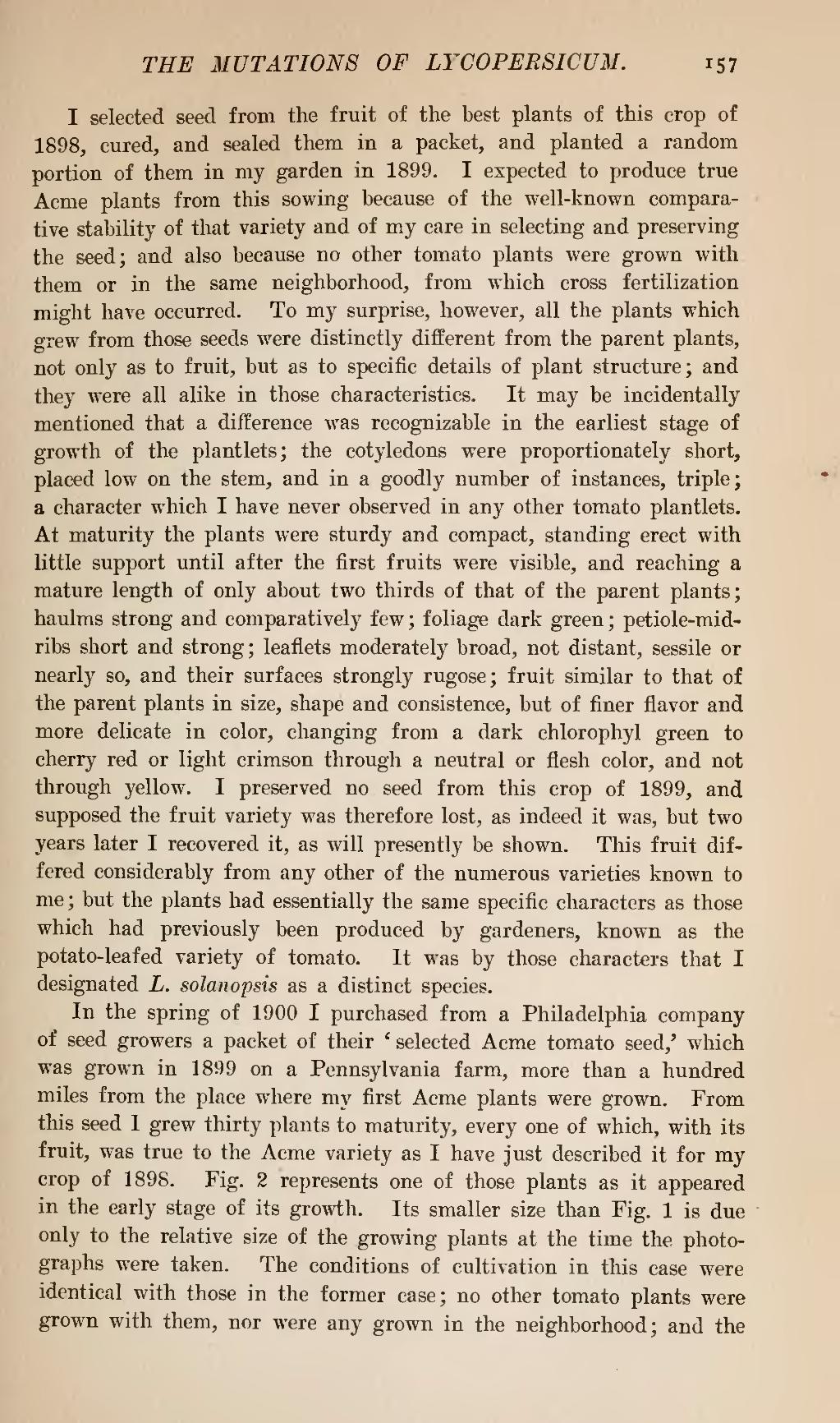I selected seed from the fruit of the best plants of this crop of 1898, cured, and sealed them in a packet, and planted a random portion of them in my garden in 1899. I expected to produce true Acme plants from this sowing because of the well-known comparative stability of that variety and of my care in selecting and preserving the seed; and also because no other tomato plants were grown with them or in the same neighborhood, from which cross fertilization might have occurred. To my surprise, however, all the plants which grew from those seeds were distinctly different from the parent plants, not only as to fruit, but as to specific details of plant structure; and they were all alike in those characteristics. It may be incidentally mentioned that a difference was recognizable in the earliest stage of growth of the plantlets; the cotyledons were proportionately short, placed low on the stem, and in a goodly number of instances, triple; a character which I have never observed in any other tomato plantlets. At maturity the plants were sturdy and compact, standing erect with little support until after the first fruits were visible, and reaching a mature length of only about two thirds of that of the parent plants; haulms strong and comparatively few; foliage dark green; petiole-midribs short and strong; leaflets moderately broad, not distant, sessile or nearly so, and their surfaces strongly rugose; fruit similar to that of the parent plants in size, shape and consistence, but of finer flavor and more delicate in color, changing from a dark chlorophyl green to cherry red or light crimson through a neutral or flesh color, and not through yellow. I preserved no seed from this crop of 1899, and supposed the fruit variety was therefore lost, as indeed it was, but two years later I recovered it, as will presently be shown. This fruit differed considerably from any other of the numerous varieties known to me; but the plants had essentially the same specific characters as those which had previously been produced by gardeners, known as the potato-leafed variety of tomato. It was by those characters that I designated L. solanopsis as a distinct species.
In the spring of 1900 I purchased from a Philadelphia company of seed growers a packet of their 'selected Acme tomato seed' which was grown in 1899 on a Pennsylvania farm, more than a hundred miles from the place where my first Acme plants were grown. From this seed I grew thirty plants to maturity, every one of which, with its fruit, was true to the Acme variety as I have just described it for my crop of 1898. Fig. 2 represents one of those plants as it appeared in the early stage of its growth. Its smaller size than Fig. 1 is due only to the relative size of the growing plants at the time the photographs were taken. The conditions of cultivation in this case were identical with those in the former case; no other tomato plants were grown with them, nor were any grown in the neighborhood; and the
